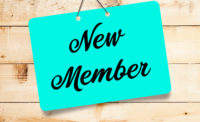 Effective communication is critical to the success of a company. Without effective communication a company will never reach its full potential. We communicate one of two ways: verbally and nonverbally. It is very important to effectively communicate with employees, potential employees, customers, and potential customers.
Effective communication is critical to the success of a company. Without effective communication a company will never reach its full potential. We communicate one of two ways: verbally and nonverbally. It is very important to effectively communicate with employees, potential employees, customers, and potential customers.
Verbal Communication with Plant Employees
Plant employees are perhaps the most important group that company owners and managers communicate with. You should speak pleasantly to employees when you meet them both in public and in private. When you are walking through the plant it is appropriate to speak to employees. It is always most effective when you call them by name.
I feel it is important to have company meetings at a specified time. I like having them either weekly or biweekly. They do not need to be long meetings. Typically, 30 minutes is plenty of time for a company meeting. Many companies have their company meetings at lunchtime. A meeting right before lunch seems to work well. At company meetings, report on how things are going and discuss any changes that need to be made.
I also like plant owners or managers to have regular meetings with supervisors. These meetings do not need to be long. Let the supervisors have a chance to make comments. Sometimes it is also appropriate to meet with supervisors on an individual basis. When meeting with employees, criticize in private and praise in public and private.
Verbal Communication with Potential Employees
When talking with potential employees be sure you clearly let the potential employee know what you are going to expect from them workwise and how you are going to expect them to conduct themselves. At this time, you may also give them a written document (nonverbal communication) that clearly outlines your company’s policies and employee expectations.
Verbal Communication with Customers and Potential Customers
When visiting with customers and potential customers, take the time to answer their questions and clearly explain to them why you must do things a certain way and if necessary, why you cannot meet a specific request they may have. For instance, if you custom process animals but it is several months before you can schedule an animal for them, explain to them why that is the case. People are much more likely to be understanding if you explain why you cannot do something they are requesting. Do not promise more than you can do.
Nonverbal Communication with Employees
There are many different way of nonverbal communication with your employees. Signs posted in the locker room, production areas, and break areas are all ways you can nonverbally communicate. Make sure your nonverbal communication with employees is professional-looking, accurate, and conveys the message you want to share with your employees. If a sign that has been posted begins to look shabby, replace it.
Nonverbal Communication with Customers and Potential Customers
The first way you positively, nonverbally communicate with customers and potential customers is by the way you maintain the outside of your plant and the area surrounding the plant. You also nonverbally communicate with signs that are posted in your plant’s reception area and livestock unloading area. Another nonverbal communication is the way you package your products. Poorly packaged and labeled product does not send a good message.
You can also nonverbally communicate with employees and customers via a website. Make sure your website looks professional and has correct information.
You as an owner or plant manager nonverbally communicate by how you dress and conduct yourself around employees and customers. Don’t expect your employees to act more professionally than you do.
Remember: Effective communication is a key to success.






Report Abusive Comment